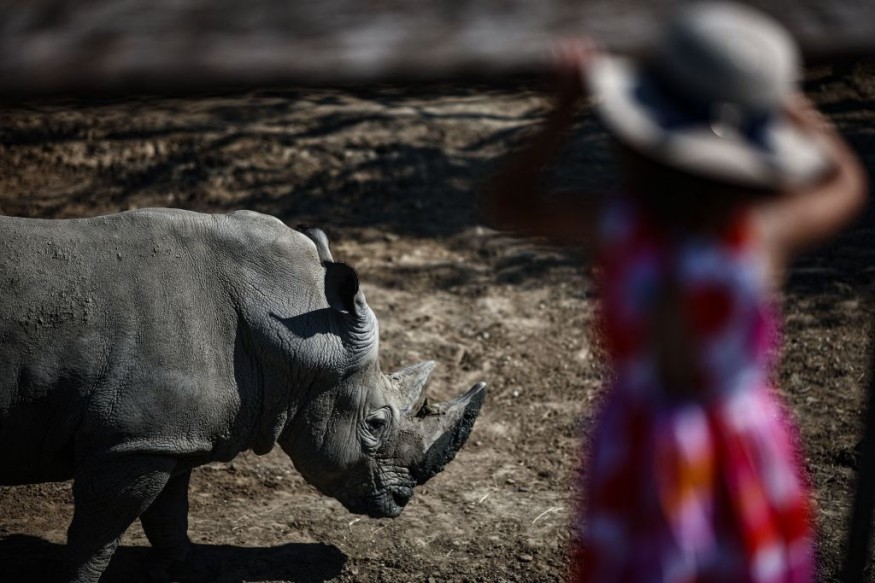A fertility breakthrough has raised hopes for saving the northern white rhino from extinction by employing cutting-edge IVF technology.
Scientists made history by successfully transferring a lab-created rhino embryo into a surrogate mother. The technique was carried out on southern white rhinos, a closely related subspecies of northern white rhinos.
The next stage is to repeat the procedure with northern white embryos.
Successful Rhino IVF

There are only two female northern white rhinos in the world: Najin and her daughter Fatu, and neither can bear a pregnancy. Najin and Fatu dwell in Kenya's Ol Pejeta Conservancy, which also housed Sudan, the last male northern white rhino, who died in 2018.
Sudan's death captivated the globe, inspiring environmentalists to work to rescue the species.
Since 2020, conservationists have generated 30 embryos of the species using eggs from Fatu, a younger female in Kenya, and sperm collected for artificial insemination from two male northern whites before they died.
Embryos are kept in liquid nitrogen in Germany and Italy.
In the most recent procedure, scientists transferred a southern white rhino embryo to see if the treatment might succeed.
The successful impregnation of a southern white rhino with an embryo of the same species was a significant milestone, according to project leader Thomas Hildebrandt.
"We achieved something that was not believed to be possible," he said.
The first effective IVF pregnancy with southern white rhinos required 13 attempts.
The embryo, created with an egg from a female southern white from a Belgian zoo and fertilized with sperm from an Austrian male, was implanted in a southern white surrogate female in Kenya, who became pregnant.
Unfortunately, the achievement was followed by tragedy.
The surrogate mother died 70 days into the pregnancy after becoming infected with Clostridia, a bacteria common in soil that can kill animals.
The death dealt a blow to the team, as a post-mortem revealed that the 6.5-cm male embryo was developing normally and had a 95% chance of survival.
Heal The Ecosystem
Conservationists believe that reviving the northern white would help "heal the ecosystem" in central and eastern Africa.
"This animal played a crucial role in a complex ecosystem before it got extinct for a while. It lived in the landscape and architecture of central Africa," said Hildebrandt.
Northern white rhinos were previously prevalent throughout Central Africa, and their number began to decline in the 1960s as a result of widespread poaching for rhino horn.
The IUCN classifies the northern and southern white rhinos as subspecies of the white rhino.
Scientists are moving swiftly as a result of recent developments. This year, there are hopes of implanting a northern white rhino embryo into a surrogate. Two surrogates, Arimet and Daly, have been identified as possible recipients of the embryos.
The researchers understand that adding additional animals through IVF would not save this species since there would be insufficient genetic variety to generate a sustainable population.
As a result, they are working on an even more experimental technique: creating rhino sperm and eggs from stem cells in order to make embryos.
Related Article : White Rhino Extinction Draws Near, South Africa Plans to Save Them
© 2025 NatureWorldNews.com All rights reserved. Do not reproduce without permission.





